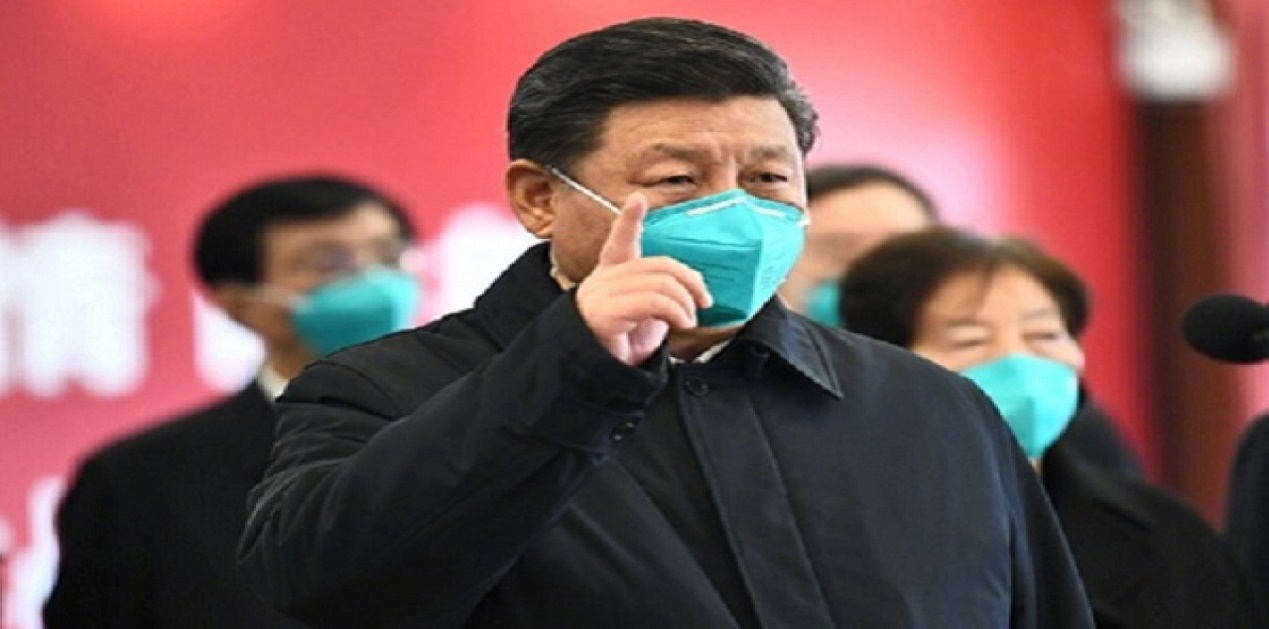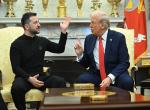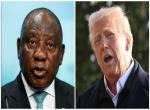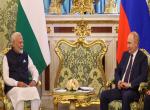As the initial shock from the COVID-19 pandemic recedes in the past few weeks, there has been a rising criticism of China from nearly all over the world. This piece would survey China’s policies and popular narratives from the Indo-Pacific that have emerged over the last month or so. US, Japan, Australia and Southeast Asia are chosen as focal points.
United States
President Donald Trump cut back on its share of funding to the World Health Organisation (WHO). It was done as a retaliatory step for WHO’s biased conduct, what Trump called as “public relations agency of China”. Trump also wanted to investigate the connivance between China and the WHO. The President also stated that when it comes to public health, there are plenty of other places where the US would spend its taxpayers’ money.1 Trump would also call the virus as ‘China Virus’- as blatant as it can get. China had begun to claim that the virus had originated in the US. Secretary of State Mike Pompeo stated that
“When countries create disinformation, it creates risks. Chinese government and part tells us they want to be our partners; they want to be transparent. We need partners we can rely on”2
In early May, the ‘Five-Eyes’ Network dossier was said to have been leaked. This is an intelligence document, a joint one amongst the Five-Eye countries-US, Canada, UK, Australia and New Zealand. This dossier claimed to have found evidence of China’s role in the origin and spread of the coronavirus. This news has caused stir and has raised the American pitch against China.
In one of his public briefings recently Trump also stated that China “made a horrible mistake, [and that], they did not want to admit it. We wanted to go in, they did not allow. They tried to covered it, they put it out, just like fire!”
Mike Pompeo also blamed the Chinese Communist Party did all that it could so that world did not learn in timely fashion and that US would hold all those responsible.
Gordon Chang, expert on China in an interview with the Fox news said that Chinese doctors knew that there was human-to-human transmission from early December and yet the Chinese government hid this information for five weeks, only admitting it as late as on 20th of January. Along with the delay in declaration, the fact that China did not suspend international travel from Wuhan and pressurised other countries not to suspend flights from China, is seen as another piece of evidence that points to China’s ‘malign interest’. Some held that this was done so that China could hoard Personal Protective Equipment (PPE) exports.3
China has blasted the US for being critical. Le Yeucheng, Chinese Vice Foreign Minister lambasted at Trump’s suggestion for repatriations, calling such action as illegal. He said that there is no international law that supports such action against a country that was the first to report such a disease.4
However, the alleged dossier was perhaps never released. The Guardian quoted its source who dismissed the theory that the coronavirus originated from the Wuhan lab. As per this report, it contradicts the claim of the white House that the virus originated from the lab.5 This so-called intelligence document has become controversial, some even suspect to have been ‘generated’ from the US to put pressure on China6. (the news of the dossier was first carried in the Daily Telegraph, an Australian newspaper.)
Irrespective of the sensationalism of the dossier, on whether the virus was created in a lab or whether it had spread from the wet markets; the western governments are serious about finding the cause of the virus. It is equally true that these governments are concerned over China’s lack of transparency and its attempts at hiding information.
The latest development pertains to President Trump’s stern letter to the WHO chief where he has blamed the organisation for being in cohorts with China. President Trump has given a 30-day timeline to Mr. Tedros Adhanom Ghebreyesus to reform the WHO, failing to do so, the American funding would be withdrawn permanently7.
Japan
Last month, Abe Shinzo announced a financial plan amidst the COVID crisis. As per the proposal, the Japanese government would provide financial aid worth USD 2 billion for Japanese companies to move back to Japan. Also, the government would provide USD 250 million worth of assistance for shifting operations out of China to any other country8.
Japanese economy is heavily dependent on China. China is Japan’s biggest trading partner. But after the lockdown, China stopped its imports from Japan which hurt Japanese from procuring spare parts.9 Japan times reported that10:
“That has renewed talk of reducing Japan’s reliance on China as a manufacturing base. The government’s panel on future investment last month discussed the idea of shifting manufacturing of high-added-value products back to Japan, and for production of other goods to be spread across Southeast Asia”.
Experts say that this stimulus will help manufacturers to shift the production. The export-oriented industries which were based in China were already considering relocation amidst pandemic, and Abe’s package has been the right incentive. But factories that cater to Chinese market such as car manufacturers are likely to stay put. Tokyo Shoko Research Ltd., a firm that conducts research on Japanese companies conducted a survey in February with a sample of 2600 Japanese companies. Out of those, 37 per cent companies were diversifying procurement from countries other than China11. However, some believe that Abe’s package may not be sufficient to incentivise relocation.
The pandemic has hit when China-Japan ties were seeing some sign of warming, including a visit of Xi Jinping to Japan. In the initial stages, Japan sent masks and personal protective Equipment (PPE) to China, which was appreciated. China also approved of a Japanese anti-viral drug called Avigan as effective treatment. So that seemed a sign of cordiality. Yet there has been criticism of China for its handling of the crisis during the initial stage of the outbreak. Abe has also drawn flak for delaying suspension of flights from China12.
But this bonhomie has hardly lasted. Chinese aggression in the East Sea has continued. On May 9th it was reported that two Chinese coast guard ships chased a Japanese fishing boat around the disputed Senkaku islands. In March a Chinese fishing vessel, (possibly a maritime militia vessel) collided with a Japanese guided-missile destroyer off the coast of Shanghai in international waters13.
Further, there is uncertainty over the fate of 2020 Olympics which were to be held in the month of July in Japan. This is also linked to Chinese tourists who contribute significantly to the Japanese tourism industry. Last year, 9.5 million Chinese tourists visited Japan. Chinese tourists are also the highest spenders14. There is a section of the Japanese tourism industry that came up to cater specifically to Chinese clientele15.
Ken Shimura, a popular Japanese comedian died due to coronavirus on 29 March. His death is said to have caused grief and anger amongst Japanese people. There was online expression of anger, blaming China for withholding information about the virus as the cause of Shimura’s death16. In February, #ChinesedontcometoJapan was trending on Twitter17.
Australia
Australian newspaper The Daily Telegraph was the first one to carry the news of the so-called five-eyes intelligence dossier on the origins of the coronavirus. As per the report, the dossier mentions the following themes to arrive at their conclusion: -
Its major themes include the “deadly denial of human-to-human transmission”, the silencing or “disappearing” of doctors and scientists who spoke out, the destruction of evidence of the virus from genomic studies laboratories, and “bleaching of wildlife market stalls”, along with the refusal to provide live virus samples to international scientists working on a vaccine.18
The Australian Commonwealth Scientific and Industrial Research Organisation (CSIRO) has had collaboration with the Wuhan institute of Virology. In fact a few scientists from the Wuhan institute were trained in Australia. Politicians have been raising concerns about collaboration with China. 19
Australia’s Prime Minister, Scott Morrison made a pitch to investigate the origins of the coronavirus. He proposed an independent enquiry into the matter. China did not take kindly to Morrison’s statement and threatened to cut imports from Australia. In an interview, Chinese Ambassador Cheng Jingye said that any such measures would see repercussions in the form of consumer boycott of Australian wine and beef. He also indicated that it would impact the inflow of Chinese tourist and students into Australia. China has denied any economic coercion. Foreign Minister Marise Payne has termed the inquiry as a ‘principled call’ and responded sternly to the Chinese claims of coercion20:
“We reject any suggestion that economic coercion is an appropriate response to a call for such an assessment, when what we need is global cooperation.”
Nonetheless the Australian Prime Minister has stood his ground for independent enquiry. He has also received support of US in this. 21The US-Australia pressure seems to have worked. On Wednesday 6th May it was reported that WHO is considering an enquiry into the origins of the coronavirus in China. Maria Van Kerkhove, a WHO epidemiologist at a press briefing said that22:
“Without knowing where the animal origin is, it’s hard to prevent it from happening again.”
On 19th May the World Health Assembly formally accepted to conduct an independent enquiry into the origins of the coronavirus. 137 nations (including China co-sponsoring the resolution at the last moment) have supported the enquiry led by Australia and the EU.23
Southeast Asia
Southeast Asia has been seriously impacted by the COVID-19 pandemic. The infections spread rapidly through the region because of the extensive economic linkages with and people -to-people movement to and fro from China. Amongst the members of ASEAN, Singapore and Vietnam were able to control the spread but Indonesia struggled. Singapore and Vietnam had suspended flights from China early into the pandemic, but Indonesia had not. It is now well known that China was pressurising countries against travel ban from China. As an organisation, ASEAN’s collective response was rather late. So far ASEAN members have engaged with all the major powers to cooperate on the COVID crisis.
In mid-April, US and the Australian navies conducted military exercise in the South China Sea with the aim of upholding freedom of navigation.24 This came after Chinese actions in the disputed waters. Right in the middle of the pandemic, China used the opportunity to demonstrate its assertiveness in the South China Sea. On April 13th a Chinese coast guard vessel rammed into a Vietnamese fishing vessel. After this, the coast guard vessel continued to sail south and entered in Malaysia’s waters. On 20th April China named some 80 geographical features in the disputed waters. ASEAN members are said to have kept a close watch on China’s activities. China’s coercive actions in the South China Sea have caused unease amongst the claimants. These activities are seen as China’s attempts to consolidate its claims and its military position in the South China Sea dispute25.
Southeast Asia has always been wary of great power rivalry and likewise are at discomfort when it comes to US-China rivalry. Even Singapore, a US ally would want to avoid being dragged into taking sides in the great power competition. The general sense is that the regional leaders are not happy with the blame game that US and China have indulged in. The region expected a closer cooperation between the two powers in the time of such grave crisis.
In the annual The State of Southeast Asia Survey 2020 respondents called for greater resilience of ASEAN at an institutional level. As per this survey the regional attitude is equally critical of both China and the US26. The attitude towards China is shaped by the previous experience of bird flu outbreak of 1997 and SARS 2003, as both originated in China. China’s authoritative system and its attempts at misinformation and secrecy over the pandemic are viewed unfavourably. Yet, there is also hope that since China has managed to flatten the curve, it will be able to get back on track and so would be in a better position to help out its Southeast Asian neighbours. Although as is the case elsewhere, there have been complains about the quality of masks that came from China. Southeast Asian states are looking forward to gaining from the reorganisation of supply chains from China27.
There were instances of anger towards China, particularly with respect to Chinese tourists in Thailand and Vietnam. There are online petitions in Singapore, South Korea and Philippines that urge the government to ban Chinese tourists28. In the Philippines there was public anger against Chinese online casinos. President Duterte has included Philippines Offshore Gaming Operators-(POGO) which are run by the Chinese amongst the ‘essential enterprises’ that can operate during the pandemic. Citizens are upset at this favouritism shown to POGO at a time when many Filipino industries are closed due to lockdown. Several legislators have criticized the President for closeness towards China and even demanded enquiry into POGO operations29.
Since January to April 2020 there have been instances of cyber-attacks from Vietnam. FireEye Inc, a cyber security company reported that:
“Suspected Vietnamese actors APT32 carried out intrusion campaigns against Chinese targets that Mandiant Threat Intelligence believes was designed to collect intelligence on the COVID-19 crisis. Spear phishing messages were sent by the actor to China's Ministry of Emergency Management as well as the government of Wuhan province, where COVID-19 was first identified.”30
As per the information, the pattern of the attacks are traced back to a group of hackers classified as APT32 which is said to be working for the Vietnamese government. The Vietnamese government has dismissed these allegations31.
The manner in which US handled (or rather poorly managed) the COVID crisis has dented US’s image amongst Southeast Asian nations32. US’s relations with ASEAN have gone south under the Trump administration. Nonetheless amidst the COVID-19 crisis the US provided financial assistance worth USD 18.3 million in emergency health and humanitarian assistance to ASEAN members33. The US has also shows appreciation to Vietnam, Malaysia and Cambodia for providing assistance to it during the pandemic.34
On 20th February a meeting was held between ASEAN and China at the level of foreign ministers on the COVID-19. In this meeting ASEAN and China agreed to cooperate on COVID through existing institutional mechanisms35. Three months later, civil organisations from China and ASEAN met to discuss the COVID situation36. ASEAN has also set up a COVID-19 response fund in the second week of April37. ASEAN held meeting with its Plus-3 partners- that is China, Japan and South Korea to coordinate response to the pandemic38.
This reflects how Southeast Asia continues to carefully balance its relations with US and China.
Concluding Remarks
As elsewhere in the world, Southeast Asian economies are heavily dependent on China for trade and investment. Hence they will be reluctant to support any motion that seeks to either investigate the origins of the virus, or; initiate punitive or any such action against China. ASEAN members would go with the flow. But there is also a trend where few states such as Vietnam and Indonesia may want to chalk out a role for themselves. Vietnam is already on that path with its evolving relationship with the US. Notably, Vietnam also participated in the meeting of Indo-Pacific countries in April. It was the only ASEAN member to do so, even US-ally Singapore did not participate.
Japan likewise, is likely to take a nuanced position. Japan would do quiet diplomacy rather than take China head-on with strong rhetoric.
Australia is likely to continue with its anti-China stance. It will cooperate and coordinate closely with the US on future course of action. However, it is doubtful as to how far it will go considering its deep economic relationship with China. Australia exports agricultural produce to China like barley, beef and wine, which cannot find alternative markets immediately. Is the Australian leadership resolute enough to sustain the economic loss for political gains? It needs to be noted that Australia is still part of the Regional Economic Comprehensive Pact (RECP) and the latest round of negotiations took place in April 2020.
Similar prediction can be made about Europe. It is plausible that the big countries of Europe could come together to deal with the aftermath of the pandemic, and cooperate on meeting the China challenge. Europe has nearly shifted all of its manufacturing into China. If and how that changes, will have to be seen.
COVID-19 has deeply dented China’s global image. However, it is also a reality that China is the major growth engine in the world today. Nearly every industry has some dependence on China- be it as source of raw materials, or labour or manufacturing. So even if the political fallout is severe, economic dependence on China will continue. Hence, it can easily be predicted that the world will have to live with this reality. There are some signs of mitigation of this China-dependency yet, only time would show if global economic transformation takes place or not.
It is equally true that the perception of the US as the global superpower has taken a sharp hit. US response to the pandemic has not been up to the mark. But if its system stays resilient and it comes out of the crisis then there may be some recovery of its superpower image. But if it doesn’t then there would be a global leadership vacuum for some time.
One thing comes out clearly is that economic security is very critical. There are two parallel ideas- one that talks of self-reliance of various degrees and two, efforts to preserve existing economic relationships. US, India, Japan have indicated preference for the first idea, whereas smaller countries such as in Southeast Asia would be still keen to continue ties with China, since they have largely benefitted from it. Only time can show which of these ideas prevail. The nature of international relations is based on realpolitik and hence, pragmatism will triumph. Pragmatism again can be seen in two ways- the over-reliance on one country i.e. putting all the eggs in one basket is dangerous. But the alternatives- relocation, self-reliance etc. are not too practical either. Therefore, this is a catch-22 situation. Nobody has a straightforward choice. At least for now. That is why one sees strong rhetoric against China and yet dialogue with China continues in some or the other fashion.
As far as India is concerned, it must seize the negative sentiment against China and make strategic advancements accordingly. New Delhi’s major concern with China is the former’s influence in South Asia and amongst the littorals of Bay of Bengal. Can New Delhi harness the ‘Wuhan virus’ sentiment to dislodge Beijing’s influence in its neighbourhood? India should not shy away from supporting any policies from any part of the world that intend to diminish China’s power. QUAD grouping needs to be embraced without reticence, and the typical New Delhi approach of underplaying QUAD ‘as one amongst many’ is best discarded by now. This author recommends initiating military engagement at the QUAD level (Core QUAD countries; not QUAD-plus or any watered-down versions)
Simultaneously, and ironical as it sounds, the equation between Indo-Pacific countries and China, amidst the strong rhetoric should be carefully observed. However bellicose states may appear, realpolitik wins ultimately. It may also be a possibility that behind a strong rhetoric, certain countries might seek to extract concessions out of China. This is the essence of statecraft anyway. Even if New Delhi may be thinking on similar lines, it should also adopt a strong narrative against China. Generally New Delhi has maintained a balanced position. If ever there was a desire to show verbal assertion to China, now is the time. This wave of global anti-China sentiment is a rare phenomenon, it should be seen as a golden opportunity to be vocal about China, to make inroads where it was hitherto difficult. China is politically vulnerable, India must encash it.
Any indication of India molly-coddling with Beijing won’t be taken kindly by its citizens.
Endnotes
- https://www.msn.com/en-us/news/world/leaked-western-intel-dossier-reveals-how-china-deceived-the-world-about-coronavirus/ar-BB13ux3F
- Ibid.
- https://video.foxnews.com/v/6153990112001#sp=show-clips
- Op.cit.
- https://www.theguardian.com/world/2020/may/04/five-eyes-network-contradicts-theory-covid-19-leaked-from-lab
- Ibid.
- https://twitter.com/realDonaldTrump/status/1262577580718395393
- https://www.scmp.com/news/asia/east-asia/article/3079126/japan-pay-firms-leave-china-relocate-production-elsewhere-part
- https://www.japantimes.co.jp/news/2020/04/09/business/japan-sets-aside-¥243-5-billion-help-firms-shift-production-china/#.XrYxxy8w3OQ
- Ibid.
- https://www.bloombergquint.com/global-economics/japan-to-fund-firms-to-shift-production-out-of-china
- Ibid.
- https://thediplomat.com/2020/03/japanese-naval-ship-involved-in-collision-with-chinese-fishing-vessel-in-east-china-sea/
- https://www.thejakartapost.com/news/2020/03/06/coronavirus-crisis-threatens-to-silence-japans-tourist-boom.html
- https://www.scmp.com/week-asia/economics/article/3064628/coronavirus-japan-chinese-tourists-absence-begins-bite
- https://asiatimes.com/2020/04/japanese-fans-slam-china-after-comedians-death/
- Op.Cit
- https://www.dailytelegraph.com.au/coronavirus/bombshell-dossier-lays-out-case-against-chinese-bat-virus-program/news-story/55add857058731c9c71c0e96ad17da60
- bid.
- https://www.financialexpress.com/economy/australia-rejects-chinese-economic-coercion-threat-amid-planned-coronavirus-probe/1940864/
- https://time.com/5830675/china-australia-coronavirus-inquiry/
- https://www.bloomberg.com/news/articles/2020-05-06/who-considers-mission-to-seek-source-of-coronavirus-in-china?utm_content=business&utm_medium=social&utm_source=twitter&utm_campaign=socialflow-organic&cmpid=socialflow-twitter-business
- https://www.abc.net.au/news/2020-05-19/wha-formally-adopts-review-into-handling-coronavirus/12265040 and https://www.smh.com.au/politics/federal/coronavirus-inquiry-resolution-adopted-at-world-health-assembly-as-china-signs-on-20200519-p54ukn.html
- https://www.canberratimes.com.au/story/6735768/us-praises-aust-warship-in-south-china-sea/?cs=14264
- https://www.scmp.com/news/china/diplomacy/article/3082678/south-china-sea-neighbours-uneasy-beijing-expands-enforcement
- https://www.iseas.edu.sg/images/pdf/TheStateofSEASurveyReport_2020.pdf
- https://www.iseas.edu.sg/wp-content/uploads/2020/02/ISEAS_Perspective_2020_34.pdf
- https://www.japantimes.co.jp/news/2020/01/31/asia-pacific/social-issues-asia-pacific/anti-china-sentiment-spreads-along-coronavirus-especially-among-neighbors-wary-territorial-aims/#.XrY76i8w3OQ and https://www.nytimes.com/2020/01/30/world/asia/coronavirus-chinese-racism.html
- https://asiatimes.com/2020/05/chinese-casinos-spark-viral-uproar-in-philippines/
- https://www.fireeye.com/blog/threat-research/2020/04/apt32-targeting-chinese-government-in-covid-19-related-espionage.html
- https://www.bloomberg.com/news/articles/2020-04-23/vietnamese-hackers-targeted-china-officials-at-heart-of-outbreak
- Ibid.
- https://asean.usmission.gov/fact-sheet-u-s-support-for-asean-in-fighting-covid-19/
- https://www.state.gov/the-united-states-and-asean-are-partnering-to-defeat-covid-19-build-long-term-resilience-and-support-economic-recovery/
- https://asean.org/storage/2020/02/ASEAN-China-SFMM-Statement-on-COVID-19-20-Feb-2020-Final.pdf
- https://news.cgtn.com/news/2020-05-20/China-ASEAN-stand-together-against-COVID-19-QE6xPzlhU4/index.html
- https://thediplomat.com/2020/04/asean-ministers-endorse-new-covid-19-response-fund/
- https://news.cgtn.com/news/2020-04-13/-Premier-Li-to-attend-ASEAN-plus-three-meeting-on-coronavirus-PEI9lqXrH2/index.html
(The paper is the author’s individual scholastic articulation. The author certifies that the article/paper is original in content, unpublished and it has not been submitted for publication/web upload elsewhere, and that the facts and figures quoted are duly referenced, as needed, and are believed to be correct). (The paper does not necessarily represent the organisational stance... More >>
Image Source: https://images.assettype.com/swarajya/2020-03/f9833059-ca16-4ac7-bf2f-fe35f8657a4f/27206156_443b_4325_aecb_f35394d286f5.jpeg?w=1280&q=100&fmt=pjpeg&auto=format











Post new comment